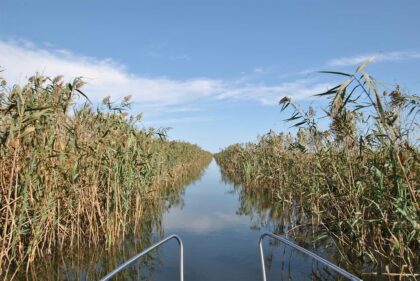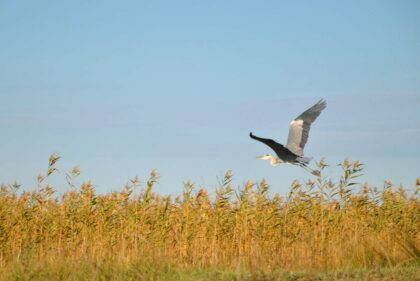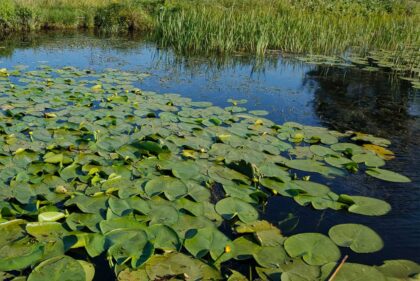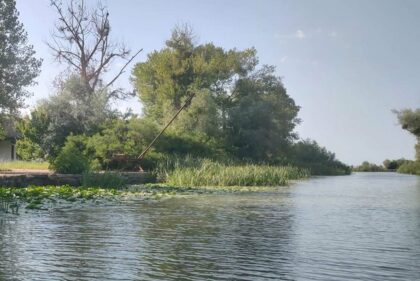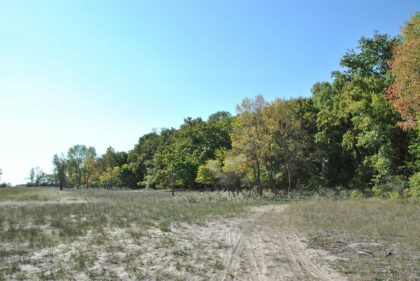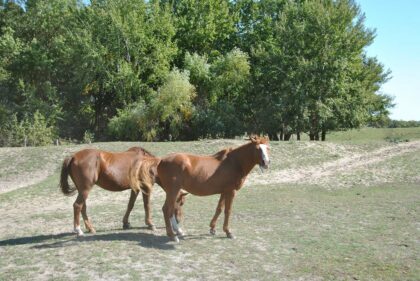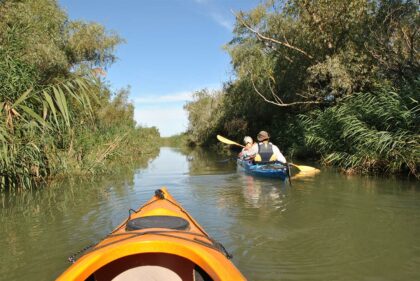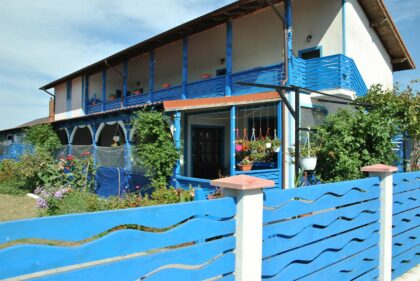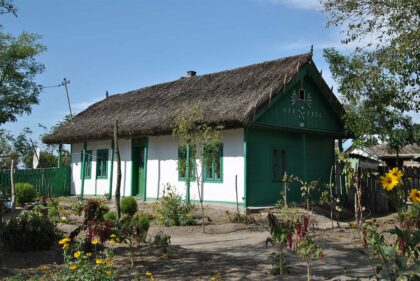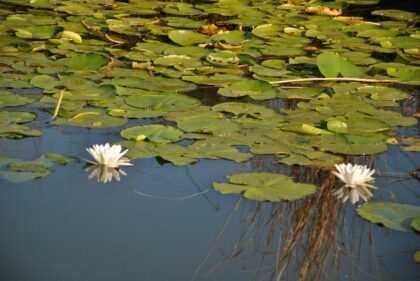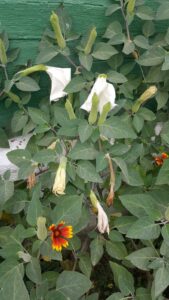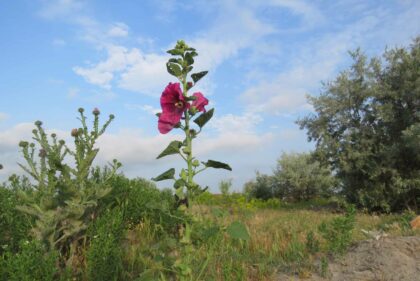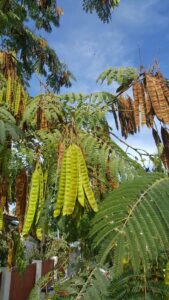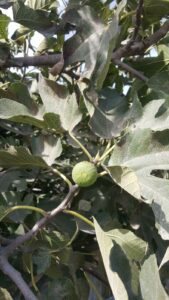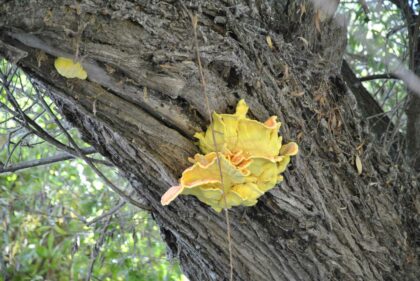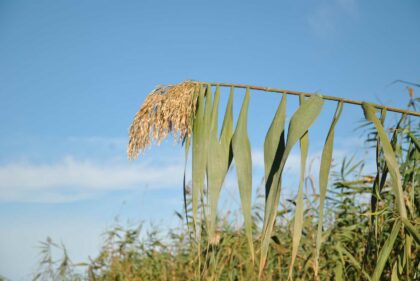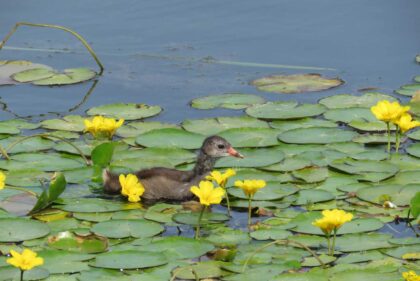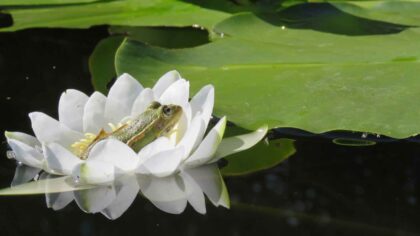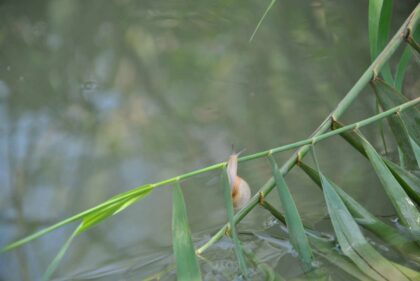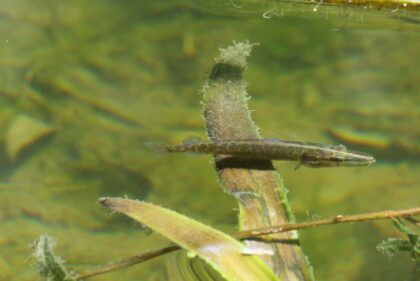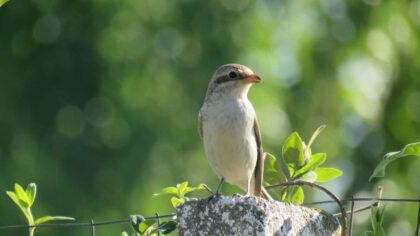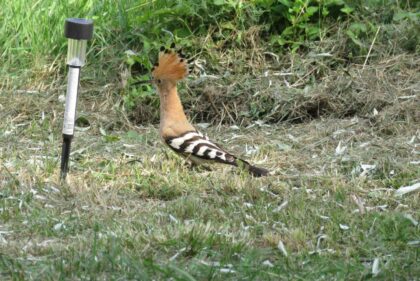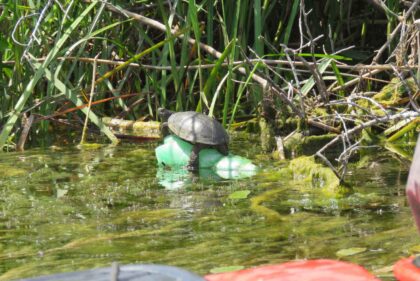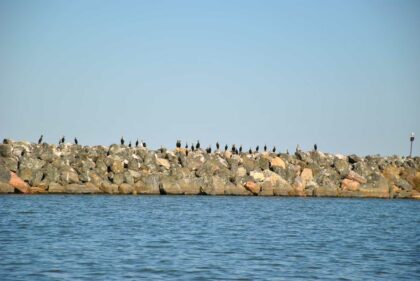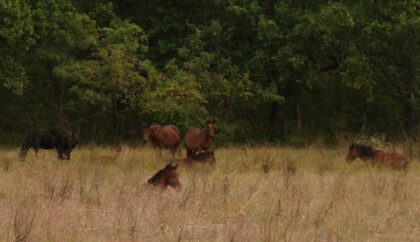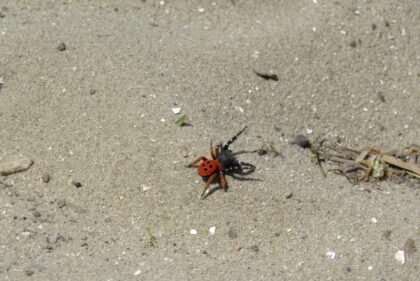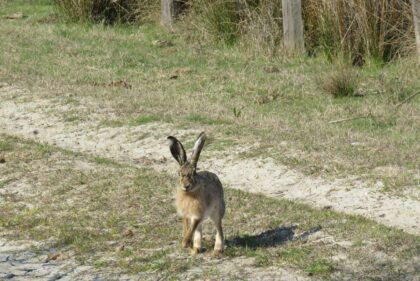
The Danube Delta
The Chilia branch forms the border with Ukraine, transports 60% of the Danube’s waters and alluvium, having a winding course over a length of 120 km. Along it are the settlements: Palazu, Pardina, Chilia Veche and Periprava. With many branches and islands this is the youngest arm, also recording the greatest depth of 39 meters. The Chilia arm is used for navigation, the most important ports being Ismail and Vâlcov.
The Sulina Arm is located in the middle of the Delta and is maintained for the navigation of sea vessels. Along it are the towns: Ilganii de Sus, Măliuc, Gorgova, Crișan, Vulturu, Partizani and Sulina. Many international ships dock at the port of Sulina, but the town itself is small. You will have the impression that you are stepping into another era. After a walk through Sulina, you can walk or take a minibus to the beach. You will be delighted by the fine sand and the beauty of the surroundings. The beach in Sulina is not landscaped, but that only adds to its charm. While taking a dip in the clear water, you can admire pelicans, seagulls and sea swallows.
Fauna and flora specific to the area
The flora of the Delta has between 2,289 and 2,383 species: four varieties of reeds, four species of rushes, sedges, water lilies, five types of water lilies, three white and two yellow, water thistles, water arrow, sarmulita, pike grass, irises watercress, water mace, rhizome, 5-6 species of willow, fir, lentil, watercress (carnivorous plant), mother-in-law’s tongue, four kinds of vines, Greek creeper, wild vine, forest gorse.
Trees and shrubs: black oak, pin oak, ash, downy ash, briar, linden, black and white mulberry, acacia, white poplar, black poplar, gray poplar, aspen, European elm, black alder, white alder, linden, pine sylvester, black pine, hawthorn, hornbeam, hazel, dogwood, white and red hawthorn, pledget.
The fauna includes 3,477 invertebrate and 552 vertebrate species. Invertebrates are 73 species of rotifers and worms, 91 species of molluscs, 115 species of crustaceans, 168 species of arachnids, 2,244 species of insects. Recently, 37-40 species new to science have been discovered, of which 32 species of insects, 8 species of arachnids.
The fish fauna includes 145-150 species.
The most common birds in the area are the common and curly pelican, the white-tailed eagle, the summer and winter swan, the blue heron, the heron, the great and little egret, the great (gray) heron, the yellow heron, the night heron, the pygmy, the red (purple ), woodpecker, sandpiper, gypsy, coot, pond hen, black and white stork, snipe, grebe, red and white grebe, great, lesser, red-necked, black-necked, winter woodpecker. Great and small white-billed grebe, small, large, polar, pink, gray grebe. White-winged, white-cheeked, black warblers. Crow, black, thrush, rock crow, raven. Gulls: Brown, White-winged, Three-toed, Pontic, Mediterranean, Laughing, Herring, Asiatic, Black-headed, Black-billed, Glacial. The big, laughing little fish. The black seagull.
White-backed, Garden, Oak, Black, Pied, Greater and Lesser Woodpecker, Dumbraveanca. Lake, Marsh, Long-tailed, Red-footed, Green-legged, Black-and-grey Whistlers. Red-necked, Long-legged, Sea, Shore, Dwarf, Little Fugitives. Gaia: gray and black. Large, brown, small reed box. Macleandru. Nugget, reed tit, sea, blue, mottled. Shellfish. Buzzards, red and collared, woodpeckers, owls, voles, doves, house swallows, house and field sparrows, etc.
The fauna includes 54 mammals. The most important are: the otter, the European mink, the wild boar, the ermine, the nutria, the weasel, the wild cat, the golden jackal, the rabbits, the lynx dog, the fox, the roe deer and the deer, the wild horses…
Amphibians and Reptiles: Large pond frog, pond frog, bullfrog, bullfrog, ringing frog, howler, water frog, ground frog, brown frog, green frog, brown frog, Syrian frog. Lizards: water snake, salamander, newt, Dobrogean newt, newt vulgaris… Three types of water snakes, house snake, rock snake, weasel, ursini viper moldavica.
To truly see the wonders of the Danube Delta, you must not miss a trip through the maze of narrow canals. There is no better place for lovers of fish dishes than the Danube Delta. The locals of Sulina will be happy to offer you a culinary experience that will delight your taste buds. Do not miss the fish borscht, traditionally prepared with water from the Danube. From Sulina you can take a tour of several hours to the Letea Forest, the northernmost sub-tropical forest in Europe, which became a nature reserve in the 1930s. Wild plants and animals live on the strips of land, called hashmacs, formed between the sand dunes.
In the Letea Forest you can see the oak and the meadow ash, the white poplar, the oak and the white linden. In addition, there is an abundance of climbing plants in the area that give the forest an exotic appearance. In addition to hawks and ravens, you will be able to admire the famous wild horses of Letea up close. The Sf. Gheorghe branch, the most southerly, oriented to the southeast, has a winding course of 112 km and carries 22% of the flow. At the outlet it forms the Sakalin Islands considered the beginning of a secondary delta. The sectioning of meanders in recent times has reduced the length of the navigable course. Along it are the settlements: Nufăru, Mahmudia, Uzlina and Sf. Gheorghe.

